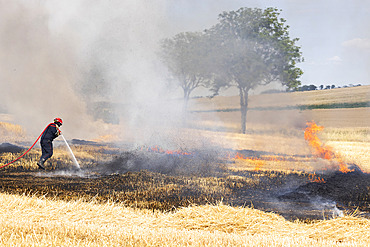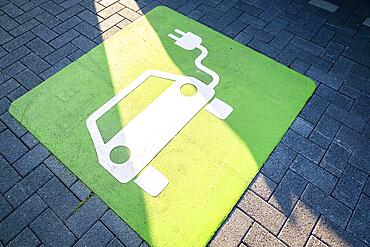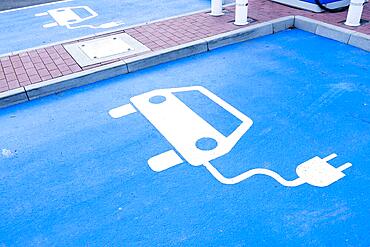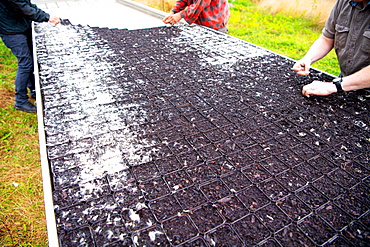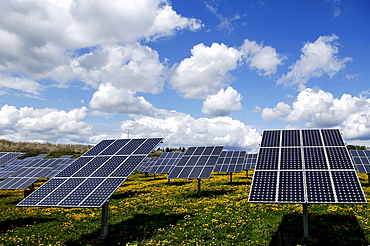Recent searches
Loading...
860-292324 - Following a period of extreme heat, a fire ravages a cereal plot: barley in the foreground and wheat in the distance, firefighters intervene to stop the fire. France Damage, loss, danger, insurance, appraisal, compensation problems
832-402642 - An e-car charges at a public charging station in Duesseldorf, North Rhine-Westphalia, Germany, Europe
832-402640 - Parking space for e-cars while charging at a charging station, Duesseldorf, North Rhine-Westphalia, Germany, Europe
832-402641 - Parking space for e-cars while charging at a charging station, Duesseldorf, North Rhine-Westphalia, Germany, Europe
832-401548 - Young happy blond woman riding an electric scooter in the city, smiling at the camera, in autumn
832-401547 - Young happy blond woman riding an electric scooter in the city, smiling at the camera, in autumn
832-399652 - Speed limit road sign of 130 khm on German Autobahn street. Generative AI
832-399654 - Polar bear standing on small island surrounded by water. Climate change concept. Generative AI
832-396866 - Round thermometer showing over 110 degrees
832-393787 - Moor protection is climate protection, breeding of Cottongrass (Eriophorum) for sowing in renaturalised moorland, Lower Saxony, Germany, Europe
832-394352 - Demonstrator at Fridays for future demonstration against climate change, Freiburg, Baden -Wuerttemberg, Germany, Europe
832-394353 - Demonstrator at Fridays for future demonstration against climate change, Freiburg, Baden -Wuerttemberg, Germany, Europe
832-391368 - Stop sign, with CO2, climate change, USA, North America
832-388930 - Eqi Glacier, Disko Bay, West Greenland, Greenland, North America
832-388931 - Eqi glacier with drift ice in the foreground, Disko Bay, West Greenland, Greenland, North America
832-385750 - Bosco Verticale or Vertical Forest residential towers, architect Boeri, Porta Nuova district, Milan, Lombardy, Italy, Europe
832-385749 - Bosco Verticale or Vertical Forest residential towers, architect Boeri, Porta Nuova district, Milan, Lombardy, Italy, Europe
832-385751 - Bosco Verticale or Vertical Forest residential towers, architect Boeri, Porta Nuova district, Milan, Lombardy, Italy, Europe
1116-46600 - People Standing With Yellow Rain Ponchos And Footwear Covered In Orange Plastic Covers, Venice, Italy
1116-45201 - Rainfall And Splashing Waves With A Lighthouse Along The Coast, Amble, Northumberland, England
857-95438 - Smashed concrete sea defenses at Ulrome near Skipsea on Yorkshires East Coast, UK. The sea has eroded past the barriers and left them stranded further down the beach. The coast is composed of soft boulder clays, very vulnerable to coastal erosion. This section of coast has been eroding since Roman times, with many villages having disappeared into the sea, and is the fastest eroding coast in Europe. Climate change is speeding up the erosion, with sea level rise, increased stormy weather and increased heavy rainfall events, all playing their part.
1212-280 - A man waits in the rain under a childs umbrella, United Kingdom, Europe
832-378505 - Cut peat on a peat bog, Yell, Shetland Islands, Scotland, United Kingdom, Europe
832-378506 - Cut peat on a peat bog, Yell, Shetland Islands, Scotland, United Kingdom, Europe
911-10750 - The Remains of the Godwin battery on the beach at Kilnsea at the head of Spurn point on Yorkshires East Coast, UK. Initially constructed during the First World War, the Godwin Battery was added to during the Second World War. It comprised of gun emplacements, search light, barracks, officers’ mess, and a hospital. This section of coastline is the fastest eroding coastline in Europe. The soft boulder clay cliffs are easily eroded and have been eroding since Roman Times, but recently the climate change impacts of increased stormy weather, increased heavy rainfall events and sea level rise have accelerated the rate of erosion. The average rate of attrition is 1.5metres per year, last year it was 5 metres.
911-10749 - The Remains of the Godwin battery on the beach at Kilnsea at the head of Spurn point on Yorkshires East Coast, UK. Initially constructed during the First World War, the Godwin Battery was added to during the Second World War. It comprised of gun emplacements, search light, barracks, officers’ mess, and a hospital. This section of coastline is the fastest eroding coastline in Europe. The soft boulder clay cliffs are easily eroded and have been eroding since Roman Times, but recently the climate change impacts of increased stormy weather, increased heavy rainfall events and sea level rise have accelerated the rate of erosion. The average rate of attrition is 1.5metres per year, last year it was 5 metres.
911-10074 - A Second world War lookout post leaning alarmingly and about to tumble over the edge of the cliff near Aldbrough on Yorkshires East Coast, UK. The coast is composed of soft boulder clays, very vulnerable to coastal erosion. This section of coast has been eroding since Roman times, with many villages having disappeared into the sea, and is the fastest eroding coast in Europe. Climate change is speeding up the erosion, with sea level rise, increased stormy weather and increased heavy rainfall events, all playing their part.
911-10069 - Concrete sea defences at Beach Bank Caravan Park in Ulrome near Skipsea on Yorkshires East Coast, UK. The coast is composed of soft boulder clays, very vulnerable to coastal erosion. This section of coast has been eroding since Roman times, with many villages having disappeared into the sea, and is the fastest eroding coast in Europe. Climate change is speeding up the erosion, with sea level rise, increased stormy weather and increased heavy rainfall events, all playing their part.
832-378328 - Polar Bears (Ursus maritimus), female and juvenile on an ice floe in the pack ice, Spitsbergen Island, Svalbard Archipeligo, Svalbard and Jan Mayen, Norway, Europe
832-378330 - Polar Bears (Ursus maritimus), female and juvenile on an ice floe in the pack ice, Spitsbergen Island, Svalbard Archipeligo, Svalbard and Jan Mayen, Norway, Europe
832-378339 - Polar Bears (Ursus maritimus), female and juvenile moving through the pack ice, Spitsbergen Island, Svalbard Archipeligo, Svalbard and Jan Mayen, Norway, Europe
832-378325 - Polar Bears (Ursus maritimus), female and juvenile on an ice floe in the pack ice, Spitsbergen Island, Svalbard Archipeligo, Svalbard and Jan Mayen, Norway, Europe
832-378338 - Polar Bears (Ursus maritimus), female and juvenile on an ice floe in the pack ice, Spitsbergen Island, Svalbard Archipeligo, Svalbard and Jan Mayen, Norway, Europe
832-378324 - Polar Bears (Ursus maritimus), female and juvenile on an ice floe in the pack ice, Spitsbergen Island, Svalbard Archipeligo, Svalbard and Jan Mayen, Norway, Europe
832-378336 - Polar Bears (Ursus maritimus), female and juvenile on an ice floe in the pack ice, Spitsbergen Island, Svalbard Archipeligo, Svalbard and Jan Mayen, Norway, Europe
832-378329 - Polar Bears (Ursus maritimus), female and juvenile on an ice floe in the pack ice, Spitsbergen Island, Svalbard Archipeligo, Svalbard and Jan Mayen, Norway, Europe
832-378327 - Polar Bears (Ursus maritimus), female and juvenile on an ice floe in the pack ice, Spitsbergen Island, Svalbard Archipeligo, Svalbard and Jan Mayen, Norway, Europe
832-378335 - Polar Bears (Ursus maritimus), female and juvenile on an ice floe in the pack ice, Spitsbergen Island, Svalbard Archipeligo, Svalbard and Jan Mayen, Norway, Europe
832-378326 - Polar Bears (Ursus maritimus), female and juvenile on an ice floe in the pack ice, Spitsbergen Island, Svalbard Archipeligo, Svalbard and Jan Mayen, Norway, Europe
832-339004 - Photovoltaics, solar panels in a field near Oberruesselbach, Middle Franconia, Bavaria, Germany, Europe
832-339005 - Photovoltaics, solar panels in a field near Oberruesselbach, Middle Franconia, Bavaria, Germany, Europe
832-339006 - Photovoltaics, solar panels in a field near Oberruesselbach, Middle Franconia, Bavaria, Germany, Europe
832-322152 - Row of houses on the bank of the river Rhine at Laar, in front of ThyssenKrupp steel works Meiderich/Beek, Duisburg, NRW, Germany
832-322151 - Row of houses on the bank of the river Rhine at Laar, in front of ThyssenKrupp steel works Meiderich/Beek, Duisburg, NRW, Germany
832-301483 - Hiking along the Aletsch Glacier, Konkordia Platz, UNESCO world heritage Jungfrau - Aletsch - Bietschhorn region, Valais, Switzerland
832-301726 - View toward Konkordia Platz, Aletsch glacier, UNESCO world heritage Jungfrau - Aletsch - Bietschhorn region, Valais, Switzerland
832-301727 - View from Mount Eggishorn to the Aletsch Glacier, UNESCO world heritage Jungfrau - Aletsch - Bietschhorn region, Valais, Switzerland
776-4302 - Point Arena Lighthouse in fog, Mendocino County, California, United States of America, North America
832-171895 - Demonstration of snowmen against climate change on the Schlossplatz in Berlin, Germany, Europe
857-57546 - Main square in Copenhagen under the UN COP 15, a giant globe is sitting there acting as a canvas for projection.
911-6441 - Ratcliffe on Soar coal fired power station surrounded by razor wire to prevent attack from climate activists, Leicestershire, England, United Kingdom, Europe
832-672 - Globe in open cardboard box surrounded by protective packing and marked as fragile
832-27006 - Demonstration of snowmen against climate change on the Schlossplatz in Berlin, Germany, Europe
832-7154 - Cologne Cathedral covered by a flood, photomontage, symbolic image, Cologne, North Rhine-Westphalia, Germany, Europe
832-27005 - Demonstration of snowmen against climate change on the Schlossplatz in Berlin, Germany, Europe
817-30475 - Planting a little lemon balm (Melissa officinalis)
817-30473 - Planting soapwort (saponaria officinalis.)
759-6157 - Electricity Pylon and Wheat Field, Munich, Bavaria, Germany
You reached the end of search results
